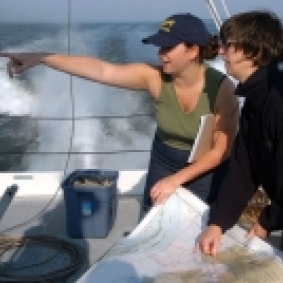Eight students will be presenting the summer work at the Ocean Sciences Meeting in March 2022!
Alessandra Paolicchi, Texas A&M University
Class Year:
2003Mentor:
Joel Baker, Ph.D.Project Title:
Binding Capabilities of Polychlorinated Biphenyls (PCBs) to Dissolved Organic Carbon and Chesapeake Bay Sediment
Abstract:
PCBs are toxic, organic compounds found in the environment. They pose numerous threats to fish, wildlife and humans. Their hydrophobic nature makes them readily bind to organisms, soils and sediments. Determining binding constants, or how well PCBs bind to organisms or sediments, is integral in defining the extent of their potential harm on the environment. Therefore, binding constants for 18 PCB congeners from two samples, Cypress Swamp DOC water and a particle water sample from Fishing Bay, were found. Prior to finding the binding constants, however, several preliminary experiments were performed including a technique verification, PUF sample, and an exposure series using SPME fibers. Since the SPME technique is till relatively new, a new SPME verification experiment was also performed to ensure that SPME fibers only measure the dissolved, as opposed to the total concentration of PCBs in a given sample. Results show that the binding constants obtained generally followed expected trends and that they are comparable to other studies done in the Upper Hudson River. Results from the SPME verification reveal that indeed SMPE fibers only measure the dissolved phase concentration of PCBs in a given water sample.



